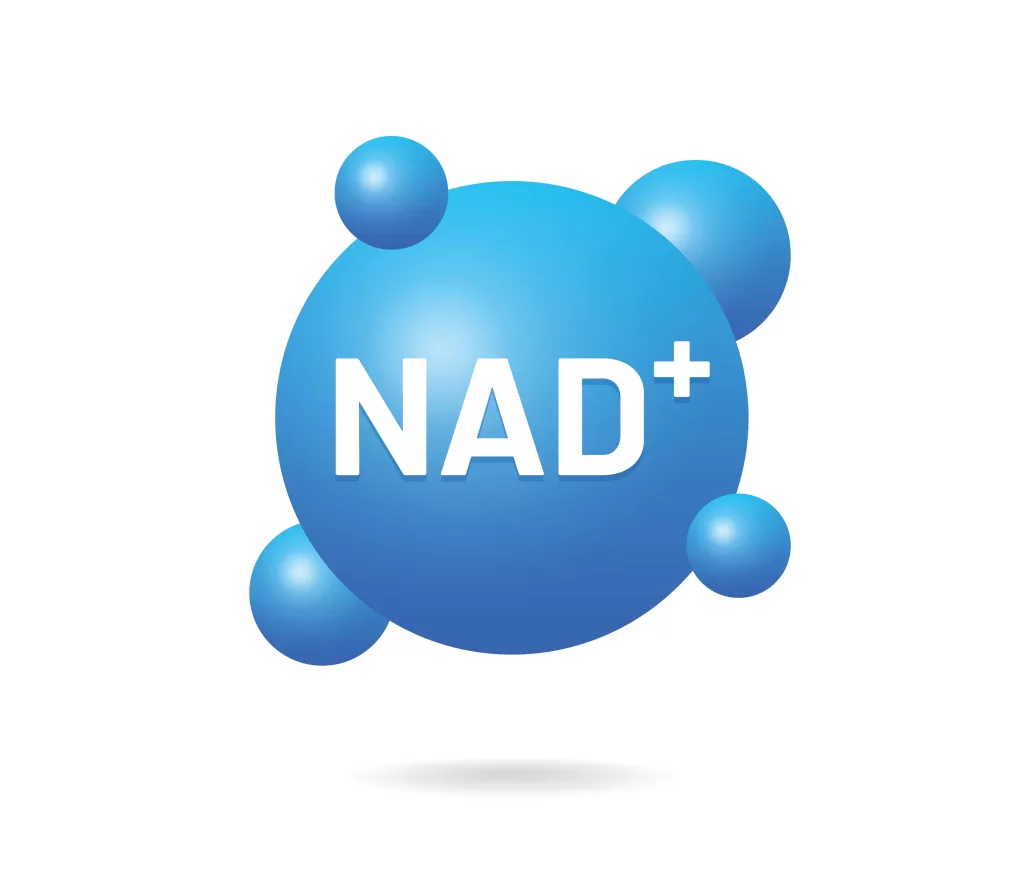How Do NMN and NR Relate to NAD+?
August 21, 2023

In the world of science and wellness, you may have come across the terms NMN, NR, and NAD+. But what are they exactly, and how do they relate to each other? Let's dive deeper into the fascinating world of cellular health and explore these interconnected components.

Understanding the Basics: NMN, NR and NAD+
Before we unravel the intricate relationship between NMN, NR, and NAD+, it's essential to grasp their individual definitions and significance.
When it comes to the world of cellular health and energy production, few molecules are as vital as NMN, NR, and NAD+. These three compounds work together in a beautifully orchestrated dance, ensuring our cells function optimally and our bodies thrive.
What is NMN?
NMN, short for Nicotinamide Mononucleotide, is a molecule that plays a crucial role in the production of NAD+. It's often hailed as the "fuel" that powers the NAD+ synthesis engine in our bodies. NMN is a key player in supporting optimal cellular function and energy production.
But what exactly does NMN do? Well, imagine your cells as tiny powerhouses, constantly working to keep your body running smoothly. NMN acts as the spark that ignites these powerhouses, enabling them to produce the energy needed for various biological processes. Without NMN, our cells would be like cars without fuel, unable to function efficiently.
Furthermore, NMN has been the subject of extensive scientific research, with studies suggesting that it may have potential anti-aging properties. By boosting NAD+ levels, NMN could potentially enhance cellular repair mechanisms and promote longevity.
The Role of NR in the Body
NR, or Nicotinamide Riboside, shares a similar role with NMN. It is a precursor to NAD+ and is essential for its synthesis. NR is like the wingman, a trusty companion for NAD+'s production. Together, they embark on a biochemical journey, ensuring our cells stay in top-notch shape.
Just like NMN, NR is involved in the energy production process within our cells. It acts as a building block, providing the necessary components for NAD+ synthesis. Without NR, the NAD+ production line would come to a screeching halt, leaving our cells without the energy they need to perform their vital functions.
Interestingly, NR has also garnered attention for its potential health benefits. Some studies suggest that NR supplementation may improve mitochondrial function, boost metabolism, and enhance exercise performance. These findings open up exciting possibilities for NR as a potential therapeutic agent in various health conditions.
NAD+ and Its Importance in Cellular Health
Now, buckle up for the star of the show: NAD+! Short for Nicotinamide Adenine Dinucleotide, NAD+ is a coenzyme found in all living cells. It is crucial for various biological processes, including energy metabolism and DNA repair. Without NAD+, our cells would be throwing a pity party instead of performing their functions efficiently.
Think of NAD+ as the conductor of the cellular orchestra. It orchestrates countless reactions within our cells, ensuring that everything runs smoothly. From converting food into energy to repairing damaged DNA, NAD+ is involved in a wide range of essential processes.
But NAD+'s importance goes beyond its role in energy production and DNA repair. It also plays a crucial role in regulating cellular signaling pathways, influencing gene expression, and maintaining the overall balance within our bodies. Without adequate levels of NAD+, our cellular orchestra would be out of tune, leading to a myriad of health issues.
Moreover, NAD+ levels naturally decline as we age, which has led to significant interest in NAD+ supplementation as a potential anti-aging strategy. By replenishing NAD+ levels, it is believed that we can support cellular health and potentially slow down the aging process.
In conclusion, NMN, NR, and NAD+ are not just mere acronyms. They represent the intricate web of molecules that keep our cells humming with energy and vitality. Understanding their roles and significance is key to unlocking the secrets of cellular health and potentially improving our overall well-being.
The Biochemical Relationship Between NMN and NAD+
Now that we've got a good grasp of the basics let's explore how NMN and NAD+ interact with each other.
But before we dive into the intricate dance between NMN and NAD+, let's take a moment to appreciate the fascinating world of cellular metabolism. Within the complex web of biochemical reactions that occur inside our cells, NMN and NAD+ play crucial roles in maintaining the delicate balance of energy production and cellular function.
How NMN Contributes to NAD+ Synthesis
Think of NMN as the magical ingredient that jumpstarts the production of NAD+. It serves as a stepping stone, supplying the necessary building blocks for NAD+ synthesis. Without NMN, the process of NAD+ production would come to a grinding halt, leaving our cells without the energy they need to carry out their vital functions.
But how exactly does NMN contribute to NAD+ synthesis? It all begins with a series of intricate biochemical reactions that take place within the cellular machinery. NMN enters the scene and undergoes a remarkable transformation, like a caterpillar turning into a butterfly.
As NMN enters the bustling factory line within our cells, it encounters a team of enzymes that work tirelessly to convert it into NAD+. These enzymes act as molecular architects, carefully rearranging the atoms and bonds of NMN to create the final product - NAD+. It's a delicate dance of chemical reactions that requires precision and coordination.
The Conversion Process: From NMN to NAD+
Picture a bustling factory line within our cells, tirelessly converting NMN into NAD+. The molecules move through a series of transformative steps until they emerge as fully-fledged NAD+ superheroes. It's like a cellular version of a superhero origin story!
First, NMN undergoes a process called phosphorylation, where a phosphate group is added to its structure. This modification is crucial for the subsequent steps of the conversion process, providing the necessary energy and stability for the transformation to occur.
Next, the phosphorylated NMN enters a complex network of enzymatic reactions known as the salvage pathway. In this pathway, the phosphorylated NMN is further modified, with additional atoms and chemical groups being added or removed. These modifications sculpt the NMN molecule, gradually transforming it into NAD+.
Throughout this intricate conversion process, various enzymes play key roles, acting as catalysts to facilitate the chemical reactions. Each enzyme has its own specific function, ensuring that the transformation from NMN to NAD+ proceeds smoothly and efficiently.
Finally, after a series of intricate steps, the NMN molecule reaches its ultimate destination - it emerges as NAD+, ready to power our cellular machinery. This transformation is nothing short of miraculous, as NMN's humble beginnings are left behind, and it takes on a new identity as a vital component of cellular energy metabolism.
So, the next time you think about NMN and NAD+, remember the incredible journey that NMN undergoes to become NAD+. It's a testament to the remarkable intricacies of cellular biochemistry, where small molecules can undergo extraordinary transformations to fulfill their essential roles in maintaining our health and well-being.
NR's Pathway to NAD+
Remember our trusty companion, NR? It also has an exciting journey towards NAD+ production.
But what exactly is NR? Nicotinamide riboside (NR) is a form of vitamin B3 that has gained significant attention in recent years due to its potential role in cellular health and longevity. NR is a precursor to NAD+ (nicotinamide adenine dinucleotide), a coenzyme that plays a crucial role in various cellular processes.
NR's Role in NAD+ Production
NR embarks on a metabolic adventure, making its way towards becoming NAD+. It is efficiently transformed and incorporated into the NAD+ synthesis pathway, playing a vital role in maintaining the cellular balance.
So, how does NR contribute to the production of NAD+? When NR enters our cells, it undergoes a series of enzymatic reactions that ultimately convert it into NAD+. These reactions involve the participation of several key enzymes, including nicotinamide riboside kinases (NRKs) and nicotinamide mononucleotide adenylyltransferase (NMNAT).
NRKs are responsible for phosphorylating NR, adding a phosphate group to it, which is a crucial step in its conversion to NAD+. Once NR is phosphorylated, it is transformed into nicotinamide mononucleotide (NMN), an intermediate molecule in the NAD+ synthesis pathway.
Next, NMNAT takes center stage. This enzyme catalyzes the final step in the conversion of NMN to NAD+. It transfers an adenylyl group from ATP (adenosine triphosphate) to NMN, resulting in the formation of NAD+.
The Metabolic Conversion of NR to NAD+
Our bodies possess remarkable metabolic machinery that effortlessly converts NR into NAD+. It's as if our cells have a secret treasure map guiding them through the intricate steps required to create NAD+. Talk about cellular dexterity!
Interestingly, the conversion of NR to NAD+ is not limited to a single cell type or tissue. It occurs in various organs throughout the body, including the liver, skeletal muscles, and brain. This widespread distribution highlights the importance of NAD+ in maintaining cellular health and function.
Moreover, the metabolic conversion of NR to NAD+ is tightly regulated to ensure the proper balance of NAD+ levels in our cells. This regulation involves feedback mechanisms that sense the cellular NAD+ concentration and adjust the production of NAD+ accordingly.
Additionally, NR is not the only precursor to NAD+. Our bodies can also synthesize NAD+ from other molecules, such as tryptophan and nicotinic acid. This redundancy in NAD+ synthesis pathways ensures that our cells have multiple sources to replenish their NAD+ levels.
In conclusion, NR plays a crucial role in the production of NAD+, a coenzyme essential for various cellular processes. Its metabolic conversion to NAD+ involves a series of enzymatic reactions that occur in different organs throughout the body. Understanding the pathway of NR to NAD+ provides valuable insights into the intricate mechanisms that maintain cellular health and function.
Comparing the Efficiency of NMN and NR in Boosting NAD+
Now that we appreciate the unique paths of NMN and NR, how effective are they in boosting NAD+ levels? Let's find out!

NMN vs NR: Which is More Effective?
The ultimate showdown! While both NMN and NR have their strengths, they carry different efficiency levels when it comes to elevating NAD+. Studies suggest that NMN may be the speedier jet, rapidly bringing NAD+ levels to new heights. However, NR's steadier pace ensures a continuous supply of NAD+ for our energy-thirsty cells.
Factors Influencing the Efficiency of NMN and NR
Efficiency isn't solely determined by the molecules themselves but also by various factors. Age, lifestyle choices, and overall health can influence how well NMN and NR work their magic in the NAD+ synthesis process. It's a complex dance between our bodies and these amazing molecules!
Potential Health Benefits of NMN and NR Supplementation
Now that we're aware of how NMN and NR help NAD+ production, let's explore the potential benefits that come with supplementing with these molecules.
How NMN and NR Supplementation May Improve Health
From boosting energy and metabolic function to enhancing cellular repair mechanisms, NMN and NR supplementation hold promise in supporting overall health. By fueling NAD+ production, they provide our cells with the firepower they need to thrive.
The Role of NAD+ in Aging and Disease Prevention
Aging is an inevitable part of life, but what if NMN and NR could slow down the clock? Research suggests that by increasing NAD+ levels, these molecules may counteract some of the effects of aging and potentially reduce the risk of age-related diseases. It's like a sip from the Fountain of Youth!
So there you have it! The interconnected world of NMN, NR, and NAD+. These molecules join forces in our cells, playing critical roles in maintaining cellular health and vitality. As we continue to unlock the secrets of the biochemistry behind NMN and NR, we gain valuable insights into potential strategies for improving our overall well-being. So, let's raise a glass to the wonders of cellular health and the remarkable journey of NMN and NR in relation to NAD+!

 Back to Blog
Back to Blog